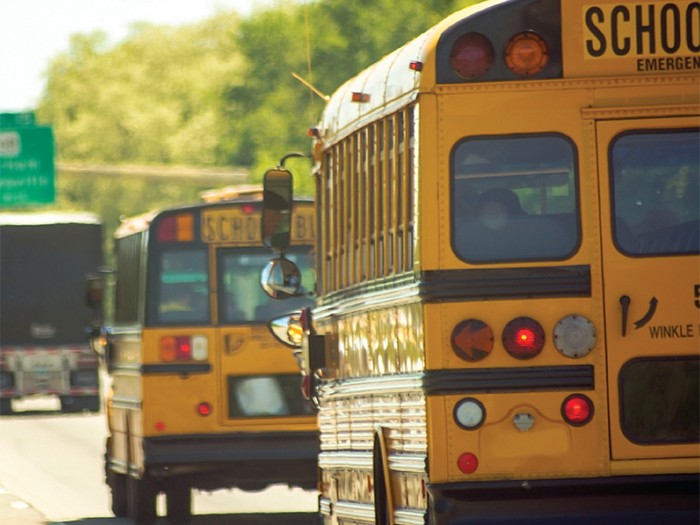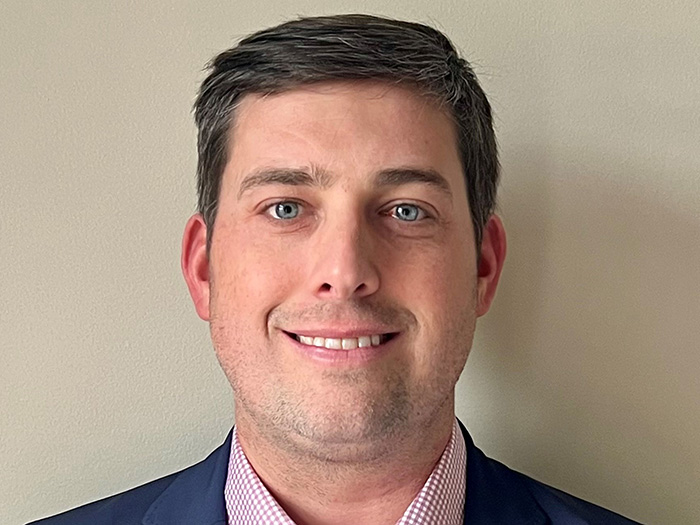Coverage Spotlight: School Bus Contractor
How to Manage the Unique Risks of School Bus Drivers

Imagine navigating all the normal risks of driving — congested traffic, aggressive drivers, distracted drivers — while also taking responsibility for the safety of a couple-dozen elementary schoolchildren in your backseat. School bus drivers and contractors take on significant liability risk each time they hit the road, as well as some other unique exposures not faced by a typical commercial auto fleet.
Mark Plousis, Vice President, Commercial Underwriting, Philadelphia Insurance Companies, describes some of the challenges faced by school bus contractors, and the solutions available to mitigate the risk.
R&I: What are the top areas of exposure for school bus contractors?
Mark Plousis: An estimated 26 million kids take a bus every day, and all the activities associated with children entering and exiting a bus and being transported create exposure, especially when the children are very young and maybe not as aware of their surroundings.
Last year, there were 22 child fatalities associated with activities around a school bus. It usually results from someone not adhering to the signals on the bus, driving around it while it’s stopped, and hitting a child going to or from the bus. In some cases, it results from the school bus actually hitting a child or from activities taking place on the bus.
There are various abuse issues that are associated with the school bus contractors, whether that’s aggressiveness or sexual abuse from a driver to a passenger, or passenger on passenger abuse. Incidents like these are very rare, but anything involving a child immediately becomes significant.
Automobile physical damage and liability risk is another big area of exposure, especially weather-related catastrophes
R&I: What are the top drivers of auto liability risk?
MP: As with all of the commercial auto industry, distracted drivers are a big problem. A school bus driver is distracted enough with the activities of multiple children entering and exiting the bus, or horsing around on the bus and making noise. The driver is also expected to look out for bad behavior like bullying. And today that’s compounded by the prevalence of handheld devices. Some drivers are checking their phones and texting while driving. We need school bus drivers to be totally alert and totally aware.
PHLY’s Vice President of Commercial Auto Underwriting, Mark Plousis, explains the built-in safety standards for the School Bus industry.
R&I: Many commercial auto fleets use telematics to track driver behavior. Are school buses equipped with telematics?
MP: School buses have been active in the telematics business for a long time, beginning with simply installing cameras on board. Today, the cost of telematics systems is dropping as the technology gets cheaper and easier to produce, so more of our contractors have implemented fleet telematics. It does help manage the driver, because the driver knows he or she is being watched, and it may also help manage the children for the same reason.
In addition to conditioning behavior of the driver and the passenger, telematics systems also memorialize the data, including speed, hard braking, sharp turning, etc. So over time, we start to see drivers not using their phones while they’re operating the bus, and being cognizant of their speed, how they make turns, and how hard they hit the brakes. School bus contractors can manage their risks much more effectively with the help of telematics.
R&I: Do schools set certain standards that bus contractors must adhere to around the maintenance of the vehicles or qualifications of drivers?
MP: The federal government actually sets a lot of standards for the “traditional” yellow school bus. The National Highway Traffic Safety Association dictates how the buses are built, maintained and operated, and has established safety standards on the drivers.
As with all of the commercial auto industry, distracted drivers are a big problem.
Many states have additional driver requirements on top of that, such as a criminal background and sexual offender background check. Each state may have different standards around bus specs — everything from its structure to how high the seats are and how the swing arm is attached. And each state reviews the buses of each contractor to make sure that they comply, so there is a lot of built-in risk management by the states.
It’s imperative that contractors follow these guidelines and do everything in their power to ensure their vehicles are safe and their drivers are qualified, otherwise they risk losing their contracts with a school district and may end up out of business.
R&I: What risk mitigation recommendations would you make to school bus contractors?
MP: The top items are driver screening and driver training.
Many contractors that we work with already do extensive training, both onsite at their facilities and on the road, having drivers practice their routes and familiarize themselves with their stops. They’ve taken a very hands-on approach.
Insurance coverage is secondary to proactive risk management.
As part of our School Bus Contactor Program, we also offer several risk management services, including an online driver safety training program that focuses on distracted driving.
Screening driver history can be more difficult, but we are addressing that with DMV monitoring. We put all of our contractors’ drivers into one of our vendor’s databases and monitor their driving activity 24/7. If a school bus driver has a speeding incident or a DUI incident on a Friday or Saturday night, we’ll know about it right away, and we’ll let our insureds know about it. Addressing those issues immediately is the best way to keep unsafe drivers off the road, which goes a long way in reducing all kinds of risk. Insurance coverage is secondary to proactive risk management.
R&I: What other services are included in Philadelphia Insurance’s school bus contractor program?
MP: We have a team of risk management consultants that will work with insureds on a number of issues. They’ll review each account’s loss history, identifying patterns to see where they can help reverse a negative trend. They’ll review safety manuals and help to create a better one if needed. They’ll do field inspections of their yard and each individual bus to make sure everything’s safe. They’ll also provide one-on-one driver training. It’s a hands-on approach.
R&I: What coverages does the program provide?
MP: The key benefits of the program are auto liability and auto physical damage. We also have an auto enhancement form that gives some good physical damage coverages to the operators, including a zero deductible for repair of glass, and coverage for towing, lease gap, electronic equipment and other physical damage causing loss of use. Property/casualty commercial general liability, as well as abuse and molestation coverage are also available.
In the event of a significant accident, we do have crisis management coverages that can be utilized immediately, which includes image restoration. With social media and the ability for word to spread so quickly, it’s important to make sure companies respond to an incident quickly, but correctly, and also to ensure no one is defaming their character unfairly. We have a team of contractors with the company that can work with our insured to make sure that their reputation is maintained and taken care of. &











